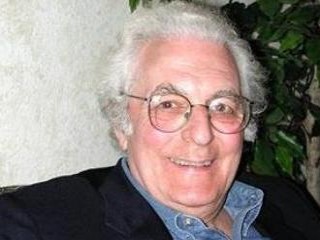
Robert Moog biography
Date of birth : -
Date of death : 2005-08-21
Birthplace : New York City, New York, U.S.
Nationality : American
Category : Famous Figures
Last modified : 2011-09-06
Credited as : pioneer of electronic music, Moog synthesizer, brain tumor
0 votes so far
Born in 1934 in New York City, Moog was the son of an electronics engineer father and piano teacher mother. As a child, Moog was forced to take piano lessons because his mother wanted him to be a concert pianist. However, Moog took after his father and was interested in building things. When he was 14 years old, he built a Theremin, the first electronic instrument in the world. A Theremin is made of vibrating radio tubes and played by moving the hands around the tubes. Moog continued to build Theremins and kits to make Theremins through high school, enabling him to pay for much of his college education.
After graduating from the Bronx High School of Science, Moog earned his undergraduate degree in physics from Queens College. In 1957, he graduated from Columbia University with a master's degree in electrical engineering. Instead of taking the expected job in corporate research, Moog continued to produce and sell about a thousand kits to make Theremins in the early 1960s. He drummed up interested in the instrument in a popular electronics magazine, Electronics World . Moog also continued his education at Cornell University, where he earned his Ph.D. in engineering physics in 1965.
Some of the money Moog made from his Theremin kits was used to design more electronic instruments. One of his first inventions was the portable guitar amplifier kit. His next big creation was his version of the synthesizer. The synthesizer had been originally created by RCA in 1955 and was the size of a room. The instrument could not really be used by musicians because it relied on binary code input to produce sounds. Inspired by a meeting with a music teacher/composer, Herbert Deutsch, in 1963, Moog soon built an analog synthesizer that was cheaper, smaller, and allowed users to control the pitch, timber, duration, and intensity of sounds. A year later, Moog added a piano-like keyboard to make the instrument more accessible for musicians and introduced the Moog synthesizer to the world.
Over the next few years, Moog continued to improve his synthesizer. The first models were monophonic, which means they could only play one musical line at one time. Moog made polyphonic models which could do harmony and counterpoint to musical lines. Moog also made smaller versions of the Moog synthesizer, called the Minimoog and the Micromoog, which were more portable and could be used in concerts. Moog began selling Moog synthesizers in the mid- to late 1960s, but it took several years for his company to become a success. He was a better inventor than businessman, a flaw that would come back to hurt him.
When Moog introduced his synthesizer, he was unsure if it would catch on. It was first used in television commercials by the mid-1960s, then became popular with serious musicians. The first album to use the Moog synthesizer as its sole instrument was Walter Carlos' 1968 release, Switched-On Bach . The album consisted of electronic versions of classic pieces by Bach, sold millions of copies, and brought the Moog synthesizer to widespread recognition. In the late 1960s and early 1970s, the synthesizer was used on various songs and albums by leading artists such as the Beatles and Emerson, Lake, and Palmer.
The Moog synthesizer remained popular until the early 1970s when electronic music was not as trendy and cheaper synthesizers created by other manufacturers flooded the market. As his instrument became less popular, Moog moved on. He lost control of his company in 1971 to entrepreneur Bill Waytena. Moog sold his remaining rights to Moog Music two years later, though he remained with the company until 1977. By that time, Moog synthesizers were still being used on film soundtracks and in certain types of music, like disco songs. Moog spent much of his time working on guitar amplifiers.
In 1978, Moog moved to North Carolina, where he set up another company, Big Briar. Moog made electronic instruments like synthesizer modules and devised different ways of inputting electronic instruments. Moog also became a research professor of music, working at the University of North Carolina at Asheville.
Moog's synthesizers had a resurgence in popularity in the 1980s and 1990s as digital synthesizers became popular. Moog's synthesizers were still in demand because the newer versions were perceived to produce sounds that were not as warm as those produced by Moog's synthesizer. Moog decided to go to court to regain his own name in conjunction with the synthesizers. He won his court battle in 2002, and again sold Moog analog synthesizers and his other inventions under the Moog Music name. His customers included high profile contemporary bands who wanted the quality of sound created by a Moog synthesizer.
Moog was honored over the years for his technical achievements. He was given the Trustee's Award from the National Academy of Recording Arts and Sciences and the Silver Medal of the Audio Engineering Society of America. In 2002, he received a Grammy Award for his lifetime of technical achievements. While Moog's name was primarily associated with synthesizers, he also continued to make Theremins throughout his life, until the year before his death.
In April of 2005, Moog was diagnosed with an inoperable brain tumor. He died at the age of 71 of brain cancer on August 21, 2005, at his home in Asheville, North Carolina. Moog is survived by his second wife, Ileana Grams, his five children from his first marriage, Michelle, Laura, Matthew, Renee, and Miranda, one stepdaughter from his second marriage, and five grandchildren.
















